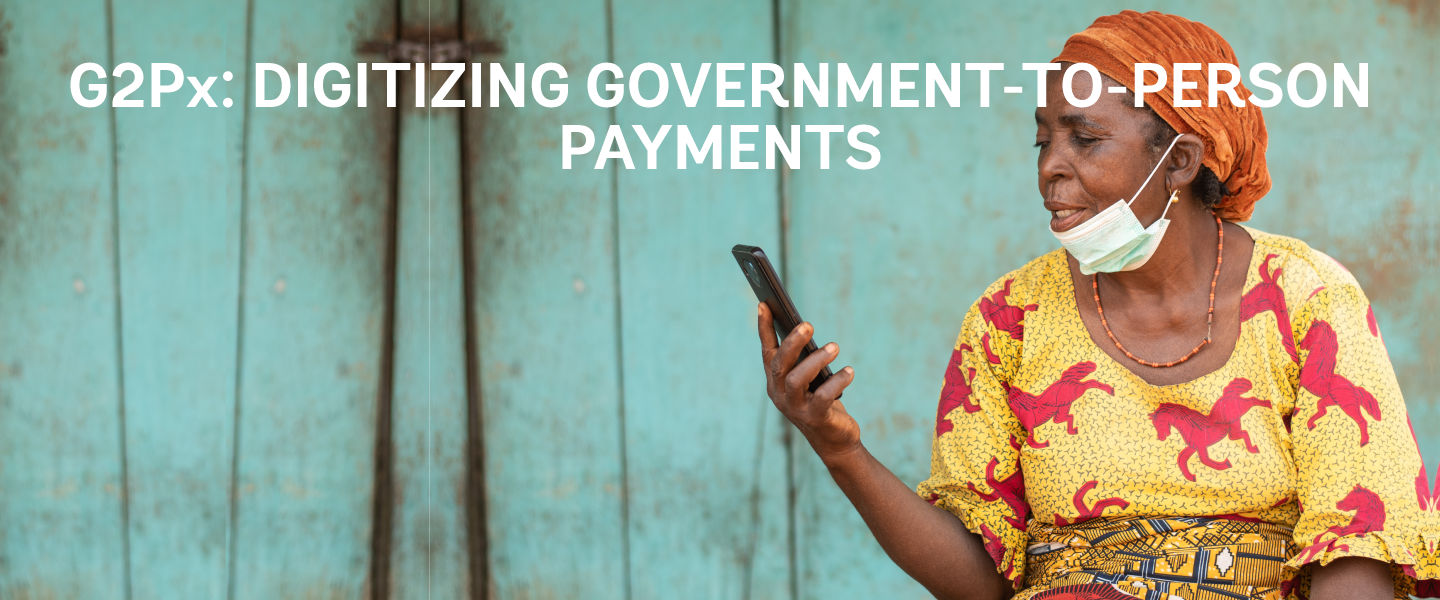The G2Px initiative brings global knowledge and expertise across sectors to contribute to the broader agenda of improving government-to-person (G2P) payments through digitization in ways such that it accelerates critical development outcomes such as financial inclusion and women’s economic empowerment. In partnership with the Bill and Melinda Gates Foundation, G2Px operates across the World Bank Group with global practices and units working on social protection, payments systems, financial inclusion, digital development, governance and gender.
G2Px has three mutually reinforcing pillars/areas of work:
Global and country actions form a dynamic feedback loop: countries follow global guidance and share knowledge, while global initiatives are shaped by real-life lessons from country implementations.
Pillar I. Thought Leadership and Analytics
Pillar II. Global Platforms and Convening
Pillar III. Country and Regional Action
Why are ‘digital’ G2P payments important?
Government-to-person (G2P) payments have a variety of target groups. Many of these payments reach population groups that are more likely to be marginalized, financially excluded, and disempowered.
Digitizing these payments represents an important opportunity to advance development outcomes.
Governments: Fiscal Savings
Digitizing payments that leverage shared infrastructure can create efficiencies across programs, reduce costs to the government, reduce leakages, improve targeting, and dissuade fraud and corruption. Ultimately, these improvements can lead to government-wide fiscal savings.
Individuals: Recipient welfare and empowerment
Improves the recipients’ experience and increasing their convenience (for example, lower cost, lower time investment, shorter distance to cash out, better complaint handling, among others); financially including recipients by providing a gateway to access and use appropriate financial products and services that can help improve their financial lives; and empowering women through increased control of their resources, and increased agency and voice.
Private Sector: Innovation and development
G2P recipients across programs and payment streams represent a compelling pool of recurring transactions. For payment service providers, this reliable volume can translate into a compelling business opportunity that can spur competition, lower costs, and increase coverage. More broadly, increasing the mass of financially included individuals can also strengthen the business case for accepting and using digital payments, lead to improvements in the design of financial products and services for the previously financially excluded population, and stimulate financial infrastructure development where it may not have otherwise occurred.



